Buffalo Fly Management
Buffalo fly (Haematobia irritans exigua) is a small, blood-feeding parasite that poses a major problem for the Australian cattle industry. These flies spend most of their adult life on cattle, feeding up to 30 times a day, causing irritation, skin lesions, reduced weight gain, and lowered milk production. Their life cycle is rapid—females lay eggs in fresh dung, and under favourable warm and humid conditions, the entire cycle from egg to adult can take as little as 10 days, allowing populations to build quickly.
Buffalo fly is estimated to cost the Australian cattle industry over $170 million annually in production losses and control efforts (B.AHE.0327-Priority list of endemic diseases for the red meat industry — 2022 update). It is found predominantly in northern Australia, including Queensland, the Northern Territory, and northern parts of Western Australia and New South Wales, with its range largely limited by climatic conditions. However, due to climate change and increasing temperatures, the fly's distribution is expected to expand further southward, potentially affecting more cattle-producing regions in the future.
Mitigating the impact of Buffalo Fly and finding new and better ways to manage it is a key pillar of investment for MLA’s Animal Wellbeing investment program. Buffalo fly as a key priority is called out in the program's Annual Investment Plan for FY26 (link and reference once ready on our website). To help to develop a strategy for investment MLA is conducting a Gap Analysis to clearly identify where the most impactful research investment opportunities are. This review will be completed by November 2025.
Mitigating the impact of Buffalo Fly and finding new and better ways to manage it is a key pillar of investment for MLA’s Animal Wellbeing investment program. Buffalo fly as a key priority is called out in the program's Annual Investment Plan for FY26 (link and reference once ready on our website). To help to develop a strategy for investment MLA is conducting a Gap Analysis to clearly identify where the most impactful research investment opportunities are. This review will be completed by November 2025.
There is some exciting new chemical technology in the development pipeline. MLA is engaging with animal health companies to fast track the identification and development of candidate molecules to fill the gap left by Diazinon.
MLA in conjunction with the industry will be working with the APVMA to identify any other registered chemical that is due for review in the next few years and ensure that proactive action is taken to preserve registrations where appropriate, and facilitate all data gathering activities where they are required.
Managing Buffalo Fly without using Diazinon in certain regions will be difficult. MLA will soon publish best practice guidelines for producers most affected by the withdrawal of Diazinon as well as give advice for Buffalo Fly control in general terms.


